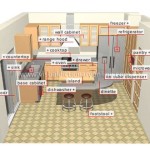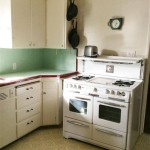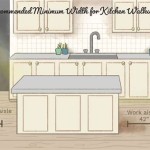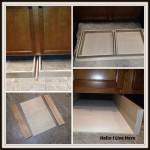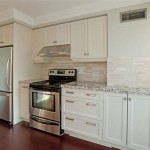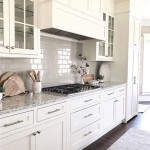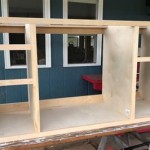Kitchen Cabinet Veneers: A Comprehensive Guide
Kitchen cabinet veneers represent a popular and cost-effective method for updating the aesthetic of a kitchen without the expense and disruption of a complete cabinet replacement. Veneers offer a thin layer of material applied to the surface of an existing cabinet box, effectively providing a new look without the need for significant structural alterations. This article explores the various types of kitchen cabinet veneers, their advantages and disadvantages, the installation process, and factors to consider when selecting the most suitable veneer for a particular kitchen.
The use of veneers in cabinet construction dates back centuries, evolving from hand-cut wood pieces to sophisticated, precisely manufactured products. Modern veneers are available in a wide array of materials, finishes, and styles, catering to diverse design preferences and budgetary constraints. Understanding the nuances of these options is crucial for making informed decisions that result in a durable and visually appealing kitchen upgrade.
Types of Kitchen Cabinet Veneers
The primary distinction among kitchen cabinet veneers lies in the material used for the surface layer. Each material offers unique characteristics in terms of appearance, durability, maintenance, and cost. The most common types include wood veneers, laminate veneers, and RTF (Rigid Thermofoil) veneers.
Wood Veneers: These are thin slices of real wood, typically cut from logs using various methods such as rotary cutting, slicing, or sawing. The cutting method significantly impacts the grain pattern and appearance of the veneer. Rotary-cut veneers, for example, produce a broad, cathedral-like grain pattern, while quarter-sawn veneers display a straight, consistent grain. Wood veneers offer the authentic look and feel of solid wood at a fraction of the cost. They can be stained, painted, and finished to match existing décor or achieve a desired aesthetic. However, wood veneers are more susceptible to damage from moisture and scratches compared to synthetic options and require careful maintenance.
Different wood species offer distinct visual and performance characteristics. Oak, maple, cherry, and walnut are popular choices, each with its own unique grain pattern, color, and hardness. The selection of wood species should consider the overall kitchen design, the desired level of durability, and the budget. High-end wood veneers can significantly increase the cost of the project.
Laminate Veneers: Laminate veneers consist of multiple layers of paper or fabric impregnated with resin, bonded together under high pressure and heat. The top layer, known as the decorative layer, features a printed design that can mimic wood grain, solid colors, or other patterns. Laminate veneers are known for their durability, resistance to scratches and stains, and ease of cleaning. They are also a more cost-effective alternative to wood veneers.
The quality of laminate veneers can vary significantly. High-pressure laminates (HPL) are more durable and resistant to wear than low-pressure laminates (LPL). HPL is typically used for high-traffic areas and applications that require greater resistance to impact and moisture. The design options for laminate veneers are virtually limitless, offering a wide range of colors, patterns, and textures to suit any kitchen style.
RTF (Rigid Thermofoil) Veneers: RTF veneers are made from a thin layer of vinyl that is heated and vacuum-pressed onto a substrate, typically MDF (Medium-Density Fiberboard). RTF veneers offer a seamless, smooth finish and are resistant to moisture and warping. They are also relatively easy to clean. RTF veneers are frequently used for cabinet doors and drawer fronts, providing a clean, modern look.
While RTF veneers are generally durable, they can be susceptible to damage from heat. Prolonged exposure to high temperatures, such as from an oven or dishwasher, can cause the veneer to peel or delaminate. The color options for RTF veneers are often limited compared to laminate or wood veneers, but they are available in a variety of popular colors and wood-grain patterns.
Advantages and Disadvantages of Kitchen Cabinet Veneers
Choosing the right type of veneer for kitchen cabinets involves weighing the advantages and disadvantages of each material. Considering factors such as cost, durability, aesthetic appeal, and maintenance requirements is crucial for making an informed decision.
Advantages of Veneers: A primary advantage of using veneers is cost savings compared to replacing entire cabinet boxes. Veneers allow homeowners to achieve a fresh, updated look without the expense and disruption of a full renovation. Veneers also offer a wider range of design options than solid wood cabinets, allowing for greater customization and personalization. The installation process for veneers is typically less time-consuming and disruptive than cabinet replacement, minimizing inconvenience to the homeowner.
Furthermore, veneers can be a more environmentally friendly option than solid wood cabinets. By using a thin layer of material over an existing substrate, veneers conserve natural resources and reduce waste. They provide an opportunity to repurpose existing cabinets, extending their lifespan and reducing the need for disposal.
Disadvantages of Veneers: While veneers offer numerous benefits, they also have certain limitations. Wood veneers are susceptible to damage from moisture, scratches, and dents, requiring careful maintenance and protection. Laminate and RTF veneers, while more durable, may not have the same aesthetic appeal as real wood. RTF veneers can be vulnerable to heat damage, limiting their suitability for certain areas of the kitchen.
The quality of veneer installation is critical to its long-term performance. Poorly installed veneers can peel, bubble, or crack, compromising their appearance and durability. It is essential to hire a qualified professional with experience in veneer installation to ensure a proper and lasting result. Additionally, veneers only address the surface of the cabinets. If the existing cabinet boxes are structurally unsound, veneers will not resolve these underlying issues.
Installation and Maintenance of Kitchen Cabinet Veneers
The installation process for kitchen cabinet veneers typically involves several steps, including surface preparation, veneer application, and finishing. Proper preparation is crucial for ensuring a strong and durable bond between the veneer and the existing cabinet surface.
Surface Preparation: The first step is to thoroughly clean and prepare the cabinet surfaces. This involves removing any dirt, grease, or existing coatings. The surface should be sanded to create a smooth and even base for the veneer. Any imperfections, such as holes or cracks, should be filled with wood filler and sanded smooth. The surface must be completely dry before applying the veneer. In some cases, a primer may be recommended to improve adhesion.
Veneer Application: The chosen veneer is then cut to size and applied to the prepared cabinet surface. Different types of veneers require different application methods. Wood veneers typically require the use of contact cement, which is applied to both the back of the veneer and the cabinet surface. The veneer is then carefully aligned and pressed onto the surface, ensuring a strong and even bond. Laminate and RTF veneers may use adhesives or heat-activated bonding agents, depending on the specific product.
Finishing: Once the veneer is applied, it may require additional finishing. Wood veneers can be stained, painted, or sealed to achieve the desired look and protect the surface. Laminate and RTF veneers typically do not require additional finishing, as they already have a durable and protective surface layer. Edges and corners should be carefully finished to prevent chipping or peeling.
Maintenance: Proper maintenance is essential for extending the lifespan of kitchen cabinet veneers. Wood veneers should be cleaned regularly with a soft cloth and a mild wood cleaner. Avoid using harsh chemicals or abrasive cleaners, as these can damage the finish. Laminate and RTF veneers can be cleaned with a damp cloth and a mild detergent. Avoid prolonged exposure to moisture and wipe up spills immediately. Periodically inspect the veneers for any signs of damage, such as peeling or cracking, and address these issues promptly to prevent further deterioration.
The selection and installation of kitchen cabinet veneers represent a significant investment in the appearance and functionality of a kitchen. Careful consideration of the factors discussed in this article will contribute to achieving satisfactory and enduring results.

Refinishing Kitchen Cabinets Modern Refacing Made Easy Wisewood

Wood Veneer Vs Melamine Comparing Kitchen Cabinet Materials

Kitchen Cabinets What Is A Wood Veneer Kitchens

Wood Veneers Vs Solid Which One S Better For Kitchen Cabinets Ikonni

Cabinetry 101 Exotic Veneers Dura Supreme

Veneer Kitchen Cabinets Pros And Cons Pa

Diy Cabinet Refacing Budget Friendly Made Easy Wisewood

Top Kitchen Design Trends Of 2024 You Can Manifest Using Engineered Veneer Blog Decowood Veneers

Veneer Kitchen Cabinets Pros And Cons Pa

Wood Veneer Kitchen Cabinets A Review
Related Posts

